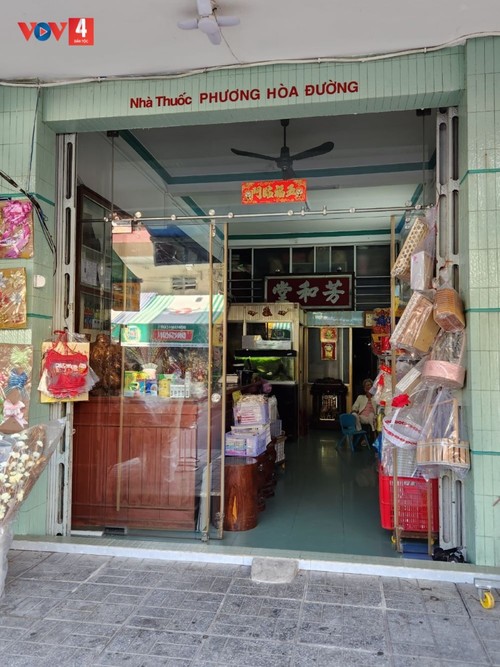 A Chinese herbal medicine pharmacy in Chau Doc city, An Giang province. (Photo: VOV) A Chinese herbal medicine pharmacy in Chau Doc city, An Giang province. (Photo: VOV) |
The Hoa have many rituals, including a baby-naming ceremony held several days after a baby is born. The child assumes its father’s surname. The middle name defines the child’s rank in the family and must not overlap with the name of anyone else in the family. The name also denotes the child’s gender.
“For the Hoa people, the middle name shows the person’s position in the family tree. For example, my middle name is Binh, so other family members of the same rank in the family tree also have the middle name of Binh or Vinh. Different generations in the family have different middle names. The names of the children or grandchildren must not be the same as the names of their predecessors. Popular names for females are My, Nga, Xuan, and Le, which are considered beautiful names,” said Tran Binh Hoa, a Hoa person in Chau Doc district.
Traditionally, a person with good health, good virtue, and good luck is asked to choose the name for the child, according to Mr. Hoa.
“A person who is healthy and wealthy is asked to name the child to bring him or her good luck. Hoa people often have two names – the official name on the birth certificate and a nickname given to a difficult child.”
When the child is one month old, the family holds a ceremony to report the new family member to the gods and ancestors, Mr. Hoa said.
“During the ‘full-month’ ceremony, the infant’s hair is shaved to allow new hair to grow. Then we prepare an offering of rice and soup for our ancestors. The details of the full-month ceremony depends on the family. Some hold the ceremony privately. Others invite relatives and friends. The offering tray contains five items from which the child may choose. The item the child chooses predicts what future occupation he or she will follow.”
The Hoa in An Giang province also attach great importance to the longevity celebration. In Hoa families, the elderly are highly respected for their life experience and knowledge of traditions and culture. The longevity celebration is an opportunity for children and grandchildren to show their filial piety to their grandparents and parents.
“We hold a longevity celebration for those who are 60 or older. We hope they will live longer. Each family decides how to celebrate. Some may invite relatives and friends, and some only celebrate within the family,” said Tran Binh Hoa.
“When a man turns 60, or a woman 61, their children hold a longevity celebration for them. If the family can afford it, when the grandparent or parent turns 80 (for a man) or 81 (for a woman), they hold a grand longevity celebration to which many relatives and friends are invited,” said Thai Vi Minh, another Hoa person in An Giang.
It’s a happy day for the family. An offering is made by the children and grandchildren and – whether the offering is big or small – it always includes longevity noodles and dumplings, according to Minh.
“If the person is 61 years old, you have to make 61 dumplings. We often add 10 years to show our hope for longevity. When someone is 61 years old, we say 71, but that doesn’t’t apply to 81 years old. You don’t add 10 years to that age. At the longevity celebration, everything is symbolic. For example, noodles are eaten because the long strands symbolize a long life,” said Minh.